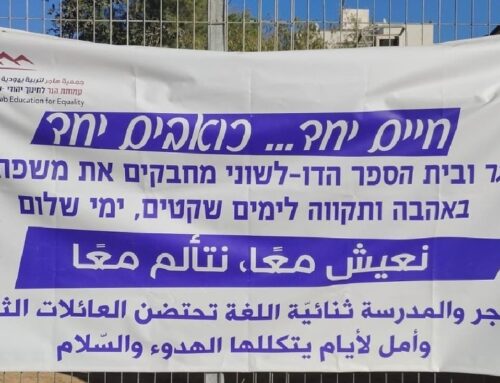Our frequent contributor, Dr. Thomas G. Mitchell (the Self-Hating Gentile blogger) reviews The Peace Puzzle: America’s Quest for Arab-Israeli Peace, 1989-2011, an anthology of writings by Daniel Kurtzer, William Quandt, Shibley Telhami, Steven Spiegel and Scott Lasensky, published in 2013 by the U.S. Institute of Peace and Cornell University Press:
 In the second half of the twentieth century, mediation in regional disputes has been one of the prime tools in the diplomatic toolbox of American presidents and secretaries of state. The United States has been involved in conflict mediation in a serious way in four different geographical areas: in the Middle East, in Southern Africa, in the former Yugoslavia, and in Northern Ireland. In the first three areas, the United States has been either the sole mediator or a primary partner with its European allies, such as Britain or NATO; in Northern Ireland, Washington played a secondary role assisting London and Dublin. America’s role as mediator in the Middle East has been the most enduring, having begun in the Eisenhower administration nearly sixty years ago and proceeding continuously from the Nixon administration up to the present; this is in comparison to only a dozen years in Southern Africa (1976-1988), eight years in the former Yugoslavia (1994-2002), and about a decade in Northern Ireland (1996-2006). Although commentators regularly attribute this mediation as motivated by a lust after a Nobel Peace Prize, only one former president, Jimmy Carter, and no secretary of state has won a Nobel for his work in the Middle East. The last time that a peace treaty emerged between Israel and one of its neighbors as a result of American mediation was 35 years ago with the Egyptian-Israeli peace treaty in March 1979.
In the second half of the twentieth century, mediation in regional disputes has been one of the prime tools in the diplomatic toolbox of American presidents and secretaries of state. The United States has been involved in conflict mediation in a serious way in four different geographical areas: in the Middle East, in Southern Africa, in the former Yugoslavia, and in Northern Ireland. In the first three areas, the United States has been either the sole mediator or a primary partner with its European allies, such as Britain or NATO; in Northern Ireland, Washington played a secondary role assisting London and Dublin. America’s role as mediator in the Middle East has been the most enduring, having begun in the Eisenhower administration nearly sixty years ago and proceeding continuously from the Nixon administration up to the present; this is in comparison to only a dozen years in Southern Africa (1976-1988), eight years in the former Yugoslavia (1994-2002), and about a decade in Northern Ireland (1996-2006). Although commentators regularly attribute this mediation as motivated by a lust after a Nobel Peace Prize, only one former president, Jimmy Carter, and no secretary of state has won a Nobel for his work in the Middle East. The last time that a peace treaty emerged between Israel and one of its neighbors as a result of American mediation was 35 years ago with the Egyptian-Israeli peace treaty in March 1979.
This group of co-authors is a distinguished team of veterans of Middle East diplomacy. Daniel Kurtzer is a former American ambassador to Egypt during the Clinton administration and to Israel during the Bush administration, who has authored several studies on American Middle East diplomacy. William Quandt is a historian of the peace process and a former NSC staffer during the Carter administration. Shibley Telhami is the Anwar Sadat professor at the University of Maryland and an Israeli-Palestinian and naturalized American, who is fluent in both Arabic and Hebrew. He is also a former professor of this reviewer while a graduate student at the University of Southern California. Steven Spiegel is a specialist on Middle East politics and development, and the author of a book on the struggle for influence between the pro-Israel and pro-Arab interest groups in Washington. Scott Lasensky is a Syria specialist, a fellow at the Council on Foreign Relations, and a former research fellow at the Brookings Institution. Both Quandt and Telhami have expertise from Camp David I to apply to their evaluation of Camp David II. Prof. Telhami told me in an email that this was not an edited work; in the preface credit is assigned to different members of the team for different chapters. The introduction and conclusion were the only chapters written collectively by the entire academic dream team.
Having written two books dealing with the Oslo process, I am convinced that peace was much closer on the Syrian track than with the Palestinians and it is the long chapter on the Syrian track that made me want to review this book. I was also curious about their overall assessment of the competence of the United States to mediate a solution to the Israeli-Palestinian conflict after the great recession of 2008. I shall limit this review to the chapter on the Syrian track during the Clinton administration, to the chapter on Bush’s second term, to the chapter on Obama’s first term, and to the concluding chapter. This is because much has already been written on Camp David II and on Bush Jr.’s first term. The first thing I noticed was that the subtitle is inaccurate: it should read “1991-2001,” as only three pages are devoted to Bush Sr.’s presidency before the Gulf War—not appreciably more than the four pages devoted to the 1973-79 period in the introduction.
William Quandt, who wrote the chapter on the Syrian track from 1991-2000, starts from the premise that peace on the Golan Heights was attainable during the Clinton administration. The Clinton administration is faulted for the lack of urgency in its approach to the peace process—and this applies to the Palestinian track as well. Secretary of State Warren Christopher went on vacation in August 1993 just as Rabin had made his famous “deposit,” agreeing to withdraw from the entire Golan if Assad met his peace terms. Quandt said that either Kissinger or James Baker would have gone into shuttle-diplomacy mode and pressured the two sides until a peace settlement was worked out. The authors in the previous chapter also fault the American team for confusion about where Rabin’s priorities lay—peace with Syria or with the Palestinians. Rabin himself may not have known and was probably going to “pluck the low-hanging fruit.” Clinton, if reading the conclusion of Quandt’s chapter, must feel like a schoolboy being compared by his teacher to a smarter, better-behaved sibling. Quandt has some sympathy with Peres’s handling of the negotiations and aims most of his criticism at Barak for being so unforthcoming. He faults Clinton for doing Barak’s bidding at Geneva rather than putting forward a plan of his own after Barak phoned Clinton with his peace plan only an hour before the summit.
Lasensky and Spiegel wrote the two chapters on the Bush Jr. administration. They make clear that for Bush (as for Obama after him) Middle East peace was a second-tier issue. Bush only really got involved in Middle East peacemaking, like Clinton, in the final year of his administration. And even then he was much more concerned with the staging of the Annapolis Summit as an event than as the start of a peace process, and had no real strategy for its aftermath. Bush, like Obama in his second term, delegated the peace process to his secretary of state, Condoleezza Rice, who was expected to succeed or fail on her own. Neither the Palestinians under Abbas nor the Israelis under Olmert seemed particularly interested in an activist American mediation and this resulted in the process foundering as soon as Prime Minister Ehud Olmert became mired in scandal (he was already a virtual lame duck after August 2006 because of his government’s poor performance in the Second Lebanon War).
Kurtzer and Quandt wrote the chapter on Obama’s first term. They fault the administration for being disorganized, lacking a firm strategy, and backing off as soon as it encountered difficulties. Their critique of Obama is not noticeably different than that of Rashid Khalidi in Brokers of Deceit, except that Khalidi is somewhat harsher. The two fault the administration for having a peace envoy, George Mitchell, who was not involved in policy-making meetings and was not present at meetings between Israeli officials and the administration. They also see the settlement freeze as a flawed approach that allowed the Palestinians to posture for nine months instead of negotiating. What is revealing is how seldom Hillary Clinton’s name is mentioned in the chapter. Maybe she was too busy racking up frequent-flyer miles to actually formulate and execute policy?
By far the weakest chapter in this book is its too brief conclusion, which does not really address the effect of domestic politics on Middle East policy. The authors end with eleven lessons for future peace efforts. Of these eleven, only the last addresses the domestic political arena and then only in superficial p.r. terms. The elephant in the room that no one wants to mention is that the Israeli Right has penetrated American policy, both through AIPAC and through the Likud’s connections with the Republican Party. This has the potential not only to prevent Washington from effectively pressuring Israeli governments, but also from effectively rewarding them with financial compensation for making peace, as it did after the Sinai II agreement in 1975 and the Egyptian-Israeli peace treaty in 1979, and intended to do in 1999-2000 for peace on the Syrian track. Until American administrations come up with an effective strategy for dealing with this penetration, and for the dysfunctional Israeli party system that guarantees discontinuity during any given peace process, there will not be an American-mediated peace agreement.






Leave A Comment